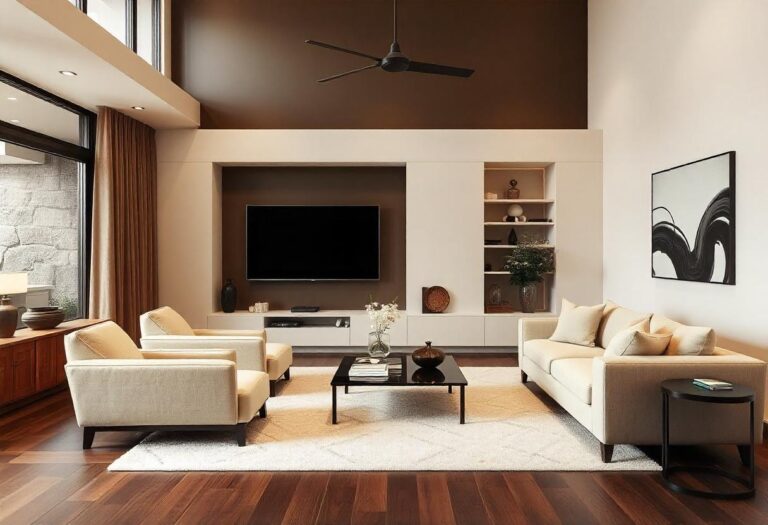In today’s fast-paced world, convenience is paramount in shopping. Customers seek easy ways to try on clothes, visualize furniture in their homes, and generally have a “try before you buy” experience. This growing demand has led to the rapid adoption of augmented reality. AR in retail offers customers a dynamic shopping experience, from virtual fitting rooms to visualizing furniture placement, providing innovative solutions that enhance the buying process.
The Growth of AR in Retail
Advanced technology has enabled brands and retailers to create engaging shopping experiences through AR. By implementing AR, retailers offer customers the ability to try on clothes or makeup virtually, take the guesswork out of furniture placement, and even match colors for items like paint or lipstick. These virtual interactions not only reduce the number of returns but also increase customer engagement and loyalty.
Understanding Augmented Reality (AR)
Augmented reality is a technology that overlays digital elements onto the physical world, enhancing the user’s perception of their surroundings. Unlike virtual reality (VR), which immerses users in a completely digital environment, AR blends digital information with the real world, offering an enriched experience through screens like smartphones and tablets. For example, video games use AR to place digital characters in real-world environments, and sports broadcasters use it to draw digital lines on a field to explain plays. In retail, AR is a powerful tool that allows brands to connect with customers in new and engaging ways.
AR vs. VR in Retail
The primary difference between AR and VR lies in their user experience. While VR creates an entirely immersive digital environment, AR enhances the real world by adding digital elements to it. VR typically requires a headset for access, immersing the user in a separate digital space. In contrast, AR can be accessed through various devices such as smartphones, tablets, wearables, and even connected devices like smart glasses and headsets. This accessibility makes AR particularly versatile for retail use, allowing for a semi-immersive experience that is both convenient and interactive.
Applications of AR in Retail
AR is transforming the retail landscape, with 61% of consumers showing a preference for retailers offering AR experiences. According to research, retail accounted for 5% of global AR usage in 2022, and this figure is expected to grow. By 2025, it’s predicted that 75% of the global population will use AR for shopping. Europe is witnessing significant growth in retail AR, with market size expected to jump from $2.8 billion in 2021 to $20.9 billion in 2025. Brands are using AR to create personalized shopping experiences, targeted marketing campaigns, and customer engagement initiatives.
For instance, eyewear brands use AR to allow customers to virtually try on glasses, and car manufacturers let shoppers customize and view cars in their chosen configurations. By enabling customers to visualize products in their own spaces or on their bodies, AR enhances the shopping experience and drives sales.
Key Benefits of AR in Retail
Reducing Returns: AR allows customers to virtually try products before purchasing, significantly reducing the likelihood of returns. By providing a realistic preview of how products will look, whether it’s clothing or furniture, customers can make more confident buying decisions.
Increasing Customer Engagement: Interactive AR features such as virtual try-ons for makeup, eyeglasses, and clothing engage customers more deeply. This playful and personalized interaction with products increases brand engagement and customer satisfaction.
Building Customer Loyalty: Offering seamless and innovative shopping experiences fosters long-term customer loyalty. AR helps brands meet customer needs more effectively, ensuring a positive experience that encourages repeat business.
Collecting Customer Data: AR activities provide valuable insights into customer preferences, including clothing sizes, color choices, and buying habits. Retailers can use this data to tailor their offerings and improve customer service.
Boosting Sales: The convenience and novelty of AR encourage customers to make purchases they might otherwise hesitate to make. The ability to “try out” products in a hassle-free manner increases the likelihood of sales.
Innovative AR Uses in Retail
Color Matching: AR helps customers match colors for products like paint and lipstick by overlaying these colors on a photo. This feature aids in choosing the right shade without the need for physical samples, making shopping more efficient.
Virtual Fitting Rooms: Brands such as ASOS and Gucci offer virtual fitting rooms, allowing customers to see how clothing items will look on their bodies without visiting a physical store. This technology addresses a major challenge for online shoppers, helping them find the right size and style effortlessly.
Interactive In-Store Displays: In-store AR displays keep customers engaged by allowing them to browse product catalogs, personalize items, and find products that match their style or skin tone. These interactive experiences enhance the in-store shopping experience.
Virtual Try-Ons: AR lets shoppers virtually try on accessories, including eyeglasses and hats, helping them make informed purchase decisions. This interactive experience reduces the uncertainty that often accompanies online shopping.

Space Visualization: AR assists customers in visualizing how large furniture items will fit into their homes or offices. By providing a realistic preview of furniture placement, customers can make more confident decisions without committing to a purchase first.
Encouraging Brand Engagement: AR creates engaging, interactive shopping experiences that keep customers entertained and invested in the brand. These experiences encourage repeat visits and foster a deeper connection with the brand.
Providing Additional Content: AR extends the customer relationship beyond the initial purchase by offering additional content and reminders about the product. This ongoing engagement helps build brand loyalty and encourages repeat purchases.
Retail Verticals Benefiting from AR
AR is particularly beneficial for brands that sell large items, products with color variations, or items like clothing and makeup that customers prefer to try before buying. Key sectors leveraging AR include:
Fashion: Virtual fitting rooms and try-ons enhance the online shopping experience by allowing customers to see how clothing fits and looks on them.
Makeup and Beauty: AR enables virtual makeup try-ons, helping customers find the perfect shades and styles without needing to test products physically.
Furniture and Homeware: AR helps customers visualize furniture in their space, ensuring the right fit and style before making a purchase.
Paint and Wallpaper: Color matching through AR allows customers to see how different paint colors or wallpapers will look in their homes, simplifying the decision-making process.
Food and Beverage: AR can provide detailed information about products, including ingredients, nutritional content, and preparation methods, enhancing the customer experience.
The Future of AR in Retail
AR and VR technologies are set to become even more integral to retail as consumers increasingly expect engaging, convenient shopping experiences. Brands and retailers will continue to leverage AR to provide personalized experiences, allowing customers to visualize products before purchasing. The future of AR in retail will likely focus on merging digital spaces with physical shelves, incorporating elements of fun and functionality. This could include gamification, immersive shopping experiences, and interactions with favorite characters and celebrities, all aimed at building customer loyalty.
In summary, AR is revolutionizing the retail landscape by offering convenience, enhancing customer engagement, and providing a seamless shopping experience. As the technology continues to advance, it will play an even more significant role in shaping the future of commerce.





